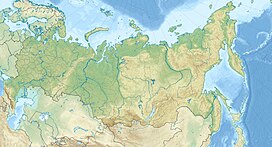About one in every six premature deaths worldwide is linked to dirty air, water and soil.
Most of those deaths are concentrated among the world’s poorest populations, according to a study published online October 19 in the
Lancet that documents the health and economic toll of pollution in 2015. In the most severely polluted countries, 25 percent of premature deaths could be attributed to pollution, especially in the air. More than half of the global deaths from air pollution in 2015 occurred in India and China.
Previous reports have documented the health cost of environmental damage according to individual types of pollutants. But this report, by the Lancet Commission on pollution and health, “is the first time that it has all been brought together under one umbrella,” said study coauthor Richard Fuller, president of the nonprofit Pure Earth.
An estimated 9 million people died from pollution exposure in 2015, the commission reports. That’s “three times as many deaths as [from] AIDS, tuberculosis and malaria combined and 15 times as many deaths as [from] war and all forms of violence,” the report says. About 90 percent of the world’s urban population lives in cities in which air quality does not meet World Health Organization standards.
Air pollution affects more than the lungs — evidence suggests it contributes to deaths from cardiovascular disease and diabetes and may be a contributor to cognitive decline (
SN: 9/30/17, p. 18).
The numbers are likely an underestimate because there is not enough research to correctly gauge the effects of certain chemicals, such as endocrine disruptors thought to interfere with body metabolism, Fuller says. “We know that they harm,” he said, “but there is not enough analysis to be able to say how they impact the entire globe.”
In addition to pollution’s role in disease, the report estimates that exposure to dirty water, air and soil puts a more than $4.6 trillion drain on the global economy.
Says Joel Kaufman, of the University of Washington School of Public Health in Seattle: “I think the take-home of this is to show how high the health burden is, and how decisions made today can save lives today, not just sometime in the future.”


 歐洲議會2022年起對草甘膦零容忍圖:路透 Amir Cohen
歐洲議會2022年起對草甘膦零容忍圖:路透 Amir Cohen




